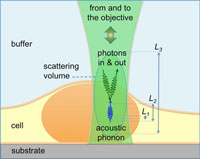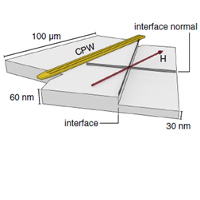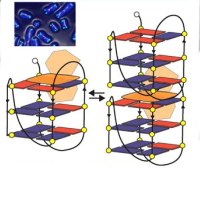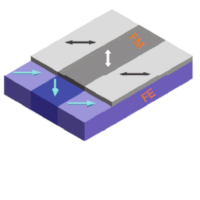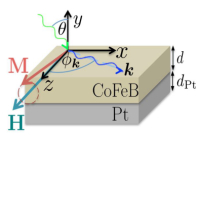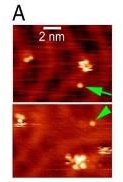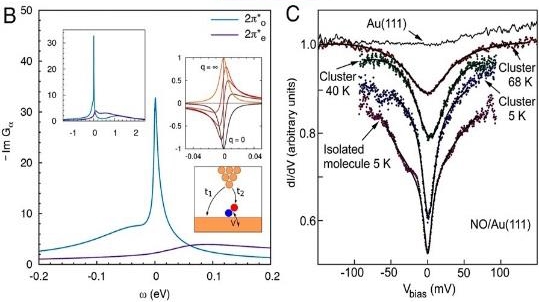Magnetism and electron correlation at the nanoscale
Magnetism and electron correlation at the nanoscale
Contact person: Silvio Modesti
|
Model systems simple enough to be tackled by ab initio calculations and containing key ingredients of more complex strongly-correlated systems are useful playgrounds to test the validity of current attempts to describe many-body systems bridging the gap between the approximations based on the Density Functional Theory and on simple model Hamiltonians. The Kondo state is a well-known many body state that arises from the interaction between a localized degree of freedom (e.g. a spin) and a sea of delocalized electrons. The physics of this state is well captured by a model Hamiltonian, but its parameters could not be obtained by ab initio methods till now. |
|
In collaboration with a the Tosatti-Fabrizio group at Democritos we have chosen the simplest and exemplary spin ½ molecule – N - physisorbed on the unreactive metallic Au(111) surface to quantitatively compare the spectral function experimentally obtained by scanning tunneling spectroscopy (STS) on single molecules and by photoemission spectroscopy with the predictions of recently-proposed ab-initio methods for Kondo systems. The prediction of a Kondo state with a Kondo temperature of the order of 15 K is experimentally verified, and the discrepancies between the calculated and the experimental lineshape provide an instructive measure of the approximations used in the modeling. Other model systems under investigation in the 2010-2012 period by STS and photoemission were simple two-dimensional systems that undergo a metal-insulator transition at high temperature, such us 1/3 of a monolayer of Sn on Si(111) and the clean Si(111)-7x7 surface. In the former case a Mott-Hubbard ground state well describes the experimental STS and photoemission data below 60 K and the metallization at higher temperature, in the latter case a simple Mott-Hubbard mechanism in not enough to explain the transition observed at 20 K and magnetic effects seems important.
R. Requist et al., PNAS 111, 69 (2014)

